This is an article which appeared in an American Masonic magazine, c1930 and which was reproduced in England, provoking a little controversy.
A few verbal alterations have been made to make it plain that what we meant to attack was the methods of research in vogue, not the Masonic scholars who labour in the field with ourselves, and just as devotedly.
We are proud of the fact that no one has been able to rebut our allegations.
Transcribed by Bro. Kenneth C. Jack, Past Master, Lodge St. Andrew, No. 814, Pitlochry, Scotland.
FREEMASONS cannot be accused of indifference to historical investigation. No matter how far back we trace our ‘Speculative Science’, its proudest boast is at all times the same – that it is extremely ancient.
It is because we have always claimed this note of antiquity that the word ‘Research‘ is usually taken as expressing something highly meritorious.
Frankly, I lack information about the United States, but in England we have twenty-eight Lodges which are known as Lodges of Research.
This term, however, is employed somewhat loosely. In some cases, the said Lodges might more accurately be described as Lodges of Instruction, or of Improvement, because their aim is to impart information about Freemasonry in general.
Unfortunately, with us that designation has been appropriated by the Lodges or Chapters where the prospective Masters or Zerubbabels are being coached for the proper rehearsals of the ceremonies.
Besides, most of the Lodges in question resemble the Fellow Craft Lodges of our traditional history in that they searched but made no discovery of importance; and have nothing original or of permanent interest, they publish no Transactions.
The Constitution of the Lodges of Research is peculiar, for they usually consist of Members of the Lodge and Members of a Correspondence Circle, described as Associates.
The latter have not the same rights as the former; they are half-members having only one foot in the Lodge.
We might question the legality of this, or its consistency with Masonic principles.
Certainly, our Book of Constitutions knows nothing of either Corresponding Circles or Associates of a Lodge; it only speaks of members.
It is an entirely new departure, which radically modifies our conception of a Masonic Lodge and its composition.
On the other hand, the fact that it has been allowed, tacitly or otherwise, implies that the innovating Lodges have powerful friends in Grand Lodge.
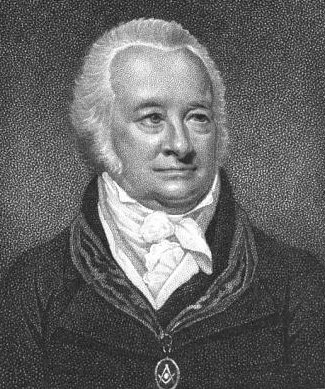
William Preston – from 12th (1812) edition of his book “Illustrations of Masonry”
IMAGE LINKED: wikimedia Attribution 4.0 International (CC BY 4.0)
Preston in 1787 founded a Grand Chapter of Harodim, intending it to be a sort of glorified Lodge of Instruction for Installed Masters only.
There was nothing objectionable in this, for the Installed Masters are a body apart from the rank and file, the ceremony of Installation being in effect a separate degree.
It is from that body of self-styled Harodim that we have derived our ‘Course of Lectures’.
The Harodim were originally the ‘Rulers’ of Freemasonry and the title indicates great dignity, for it is the Hebrew word for ‘Rulers’.
Two hundred years ago, and much later, no one could be a Royal Arch Mason unless he was an Installed Master.
Again, there was nothing objectionable in this, because the Royal Arch was then considered the ‘genuine’ traditional Freemasonry in contradistinction to the ‘Craft Masonry’, which was substituted for it by the Grand Lodge of London in 1717.
In my book, Origin of the Masonic Degrees, I have shown that the Royal Arch Masons were the Harodim of olden times. But now the limitation of membership within a Craft Lodge has no precedent.
And yet in one case we find a Lodge with a score or more of Members and thousands of Associates!
The distinction is quite arbitrary, for the Members may or may not be Installed Masters; they may or may not have gone through the Supreme Degree; indeed, they may or may not be real experts; at least it is conceivable that some Brothers who are in the Correspondence Circle may be as competent as those who have been honoured with a place in the inner ring.
We believe in promoting merit and ability, but not in First- and Second-Class Compartments.
And now we may inquire, how do these Lodges work? What are their methods and what the results achieved?
As with many other Lodges, the Secretary is the great factotum; he often has too much power, though it is for each Lodge to decide this.
If we wished to defend it, we should say that it has the merit of securing continuation of policy.
There are cases where it may be expedient, but we are not in love with the practice. The Master should be what the title implies.
Some Lodges of Research work in strange ways. One of them invited more than once the late Dr Churchward as lecturer, a dear old Brother who had persuaded himself that our anthropoid progenitors were Freemasons!
I held a discussion with him in the columns of the Freemason, but he remained obdurate, and his book, Signs and Symbols of Primordial Man, is still to be found in some Lodge libraries.
The same Lodge invited another estimable Brother from Liverpool to make propaganda for his pet scheme of ‘Operative Masonry’, most elaborate and most ancient, invented about thirty years ago!
Some years since I was able to join a number of zealous Masons who were visiting the offices of the ancient City Guilds (Livery Companies) of London.
It was an interesting excursion, and I was grateful for the opportunity to look into these old haunts.
But seeing those learned men meekly following their conductor from place to place, I naturally asked myself the question, what has this to do with Masonic research?
We covered a good deal of ground, but we saw nothing, no implements, no robes, no warrants, no ‘emblems of mortality’, no traces whatever of the mysterious Society of Freemasons, nothing that would recall the old Speculative Science.
One Brother whispered something about ‘our ancient Brethren’, but, after some inquiries, I perceived that none of the men around me had the remotest idea of who ‘our ancient Brethren’ were, to which race they belonged, what religion they professed, what interests they pursued, or how the reference to them was introduced into Masonic ritual.
Another of the bystanders ventured to observe that ‘our ancient Brethren’ were the Speculative Masons of ancient times as distinct from the Craft Masons who organised the Premier Grand Lodge of 1717.
But alas! He could not identify the Speculative Masons, nor tell the nature of their ‘speculations’.
And yet another Brother was of opinion that ‘our ancient Brethren’ must have been identical with ‘our holy ancestors, the atoning priests’, referred to in the Royal Arch Ritual.
So, it was evident that, although nearly thirty Lodges of Research had for years been investigating the origin of Freemasonry, none of them had yet been able to settle this very elementary fact, or who were our predecessors in the art.
Indeed, no one seems to have so much as a working hypothesis. We have heard much about an ‘Authentic School’, and about some critics who were very ‘severe’ in resolving everything according to the evidence.
But unfortunately, this ‘School’, however well intentioned, have made some ghastly mistakes.
They would ban all empty theories, conjectures, and inferences; but one may ask, if everything has already been authenticated and we are not allowed to speculate, how can we hope for any results from further research?
Whatever discoveries are made they will not be in the form of cut and dry verities.
I have devoted a considerable part of my life to the study of Freemasonry, having specialised on the Freemasonry of the Middle Ages down to A.D. 1717.
But I regret to find that at present there are Masons who take no notice of anything but the Freemasonry of 1717, who, despite their zeal and loyalty, are unconsciously destroying the foundations on which our Order rests.
They are men who smile at the childish credulity of the rank and file, our claim to antiquity, and our traditions.
It is the irony of the situation that those who profess to be the sole reliable guides should be the least helpful.
Being on the wrong tack, they cannot, of course, verify the claims of the Fraternity and from this they deduce that those claims are unfounded.
All this is very puzzling to the humbler brethren; but then the same thing happens in the Christian Church, where certain destructive critics exercise great influence.
The fact is that the men who form the Lodges of Research are very little wiser than the rest of us.
They know full well that there are traces of a philosophical or theosophic brotherhood which speculated on the Volume of the Sacred Law and on the fabric of King Solomon’s Temple, concerning the nature of God and his Sacred and Mysterious Name; but they fail to realise that this brotherhood is the very thing they are looking for!
From time to time, some Masonic scholars working privately make valuable contributions to the cause of research; and then the Lodges that benefit from such labours may bestow their blessing and utter some platitudes and pass helpful criticism; or, on the other hand, they may ignore them altogether; it is not often that they give real encouragement to outsiders.
Surely the Fraternity has not granted a monopoly or exclusive rights for exploration to any particular set of men.

Charles Warren carbon print portrait by Herbert Rose Barraud of London
IMAGE LINKED: wikimedia Attribution 4.0 International (CC BY 4.0)
At present, the traditionalists are ‘without the camp’ and not in good odour, but I am fully persuaded that they will yet win the day.
Let us review some striking facts. Sir Charles Warren, while occupying the Chair of the Quatuor Coronati Lodge (he was its first Master), made ex cathedra the astounding remark that in King Solomon’s Temple there was not, and there could not have been such a thing as the Middle Chamber mentioned by the Fellowcrafts in their traditional history.
Such a reckless denial subverts and completely destroys the Fellowcrafts Degree, which hinges upon the Middle Chamber!
Naturally, that denial, uttered from that exalted position, has been re-echoed parrot like by many of the small fry.
And, indeed, it has even crept into an American book, Symbolical Masonry, by Bro. H.L. Haywood, and in some late edition of Albert Mackey’s Lexicon, which Bro. Haywood quotes. One would think that such occurrences would be impossible among earnest Masons! But how are we to avoid it when we are told that there is no authorised ritual? How else can we characterise it but as iconoclasm?
Not approving of such sentiments, I wrote a paper proving the historic reality of the Middle Chamber and the complete agreement that there is between our Ritual and the Volume of the Sacred Law. on this subject.
The paper has appeared quite recently in vol. iv. Of the Transactions of the Author’s Lodge.
If Gould, another champion of the same School, had confined himself to writing the history of that type of Freemasonry which had its birth in 1717 we should acknowledge that it was admirably done.
But his work (truly monumental) is marred by his attempt to solve the problem of Masonic origins, which was a task beyond him, for manifestly he did not possess the necessary qualifications.
Gould devoted fifty-four pages in folio to prove that, notwithstanding the unbroken tradition of more than two centuries, Sir Christopher Wren (the architect of St. Paul’s Cathedral) had not been a Freemason.
Canon Horsley, another strong pillar of the School, went so far as to say that this was ‘a popular delusion’.
I controverted this senseless negation, first in the columns of the Guardian and afterwards in a paper which appeared in the Transactions of the Author’s Lodge (subsequently issued in a pamphlet form) with the title Was Sir Christopher Wren a Mason?

ir Christopher Wren by Godfrey Kneller
IMAGE LINKED: wikimedia Attribution 4.0 International (CC BY 4.0)
My contention was that if Sir Christopher presided over the most historic body of Masons in the South of England at the close of the seventeenth century, if he was the Master of the Lodge of Antiquity, and the minutes of that Lodge published by Bro. Rylands are decisive on this point, Sir Christopher with his dominating personality among contemporary architects and Masons must have been the leading figure in the Fraternity at that time, even if he was not technically a ‘Grand Master’.
Gould denied the antiquity of the Royal Arch, alleging that it had originated as one of the Scots Degrees about the year 1738.
This was so far accepted that it came to be a commonplace among Masons and the historic truth was in danger of going by default through the general acquiescence in Gould’s theory.
Now, however, we possess the account of a Masonic procession held in 1725 which shows that the Royal Arch was already functioning at the time under the self-same name as a regular Masonic institution.
We may be told that that this only ante dates Gould’s calculation by thirteen years: none the less it completely demolishes the notion, and it brings the Royal Arch very close to the year 1717 when the Grand Lodge of London was set up by Craft Masons.
A former secretary of the Quatuor Coronati Lodge, too, has denied the authenticity of the traditions embodied by the Supreme Degree, arguing that in olden times there was no Degree where the lost secrets of the Master Mason were recovered, thereby throwing overboard what is so emphatically asserted in our Book of Constitutions, that the Royal Arch is pure ancient Masonry, and an integral part of the Third Degree.
My own book, Antiquity of the Holy Royal Arch, was intended as a refutation of this heresy, which makes many Royal Arch Companions feel that, if it be true, they have been deceived.
Another objection against the modernists we must bring forward is that they hold the legend about our Master, Hiram Abif , in very low estimation.
For they regard it as a ‘myth’ and assert that it is of comparatively recent date, although their efforts to prove this have failed.
Mythos is the word they use, which is the Greek form of ‘myth’, suggesting thereby that it is something that has been handed down from classic Greece.
The legend is considered entertaining and instructive, but fabulous.
But since it is the essence of the Third Degree, those who repudiate it as pure ancient Masonry are destroying that Degree.
When a man is installed in the chair of King Solomon he has to pledge himself to ‘hold in veneration the original Rulers and Patrons of Free Masonry’.
That promise is usually kept by the rank and file. But the School of Severe Criticism is constantly denouncing some of the most eminent of men who organised the Premier Grand Lodge of 1717, accusing them of all sorts of crimes; in particular, Dr Anderson has come in for a great deal of vituperation.
We take the view that their faults were faults of the system and faults of the age; and we are inclined to think that their traducers would not have acquitted themselves any better if placed in similar circumstances.
In any case, some allowance should be made by those who would serve the Institution set up in 1717.
But worse than all this, we have to lament that there are now Masons, some of them decorated with Grand Lodge collars, who publicly pooh-pooh the idea of there being any real secrets in Freemasonry, holding that all along we have been ‘kidded’, or have been kidding ourselves, with expectations of some momentous discovery which has never materialised; and that when we reached the end of our quest it was only a case of parturiunt montes, nascetur ridiculus mus.
Naturally, if Masons do not look beyond the substitutions of Craft Masonry they are bound to be disappointed.
One would think, however, that when such Masons found themselves so much at sea about the origin of Freemasonry and its mysteries, they might wait a little longer before passing judgement on our claims or making such damaging pronouncements.
We greatly fear that one result of this babel of contradictions has been to quench the ardour of many young Masons who might have become solid and successful students of our Masonic ritual.
As it is at present some Lodges of Research can only rely on a scanty number of elderly scholars to keep things going; and sometimes it has happened that the secretaries have had no material, nothing of any consequence for the Transactions.
When these scholars go, who will fill their place? We are under great obligation to the Lodges of Research, especially to the Quatuor Coronati Lodge.
Their Transactions often are of absorbing interest, although usually what they publish relates to the Mason Craft and not to our Speculative Science.
Indeed, there are cases when the Transactions contain papers on subjects that have not the remotest connection with any type of Masonry!
The only remedy for many Lodges of Research lies in reform, in a larger comprehensiveness, in a wider outlook, in a more critical editing of their Transactions.
So long as they confine their investigation to the ‘substitutions’ of Craft Masonry, so long as ‘genuine’ Freemasonry is relegated to oblivion, so long as no notice is taken of the philosophical speculations embodied in the Royal Arch, they are bound to fail in their endeavours to unravel the origin of Freemasonry.
Reference: ‘The Genuine Secrets of Freemasonry: Prior to A.D. 1717’ (London, A. Lewis, 1930) pp 302-311.
Further Research: A meticulously researched article about Castells by Alberto Moreno – https://fdepcastells2.blogspot.com/
Article by: Bro. the Rev. F.de P. Castells, A.K.C., P.M. P.Z., P.P.A.G.Ch.
(Francisco de Paula Castells, 1867-1934)
Transcribed by Bro. Kenneth C. Jack, Past Master, Lodge St. Andrew, No. 814, Pitlochry, Scotland (Grand Lodge of Scotland)
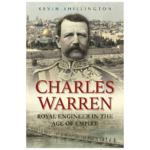
Book Review – Charles Warren: Royal Engineer in the Age of Empire
Sir Charles Warren, the Police Commissioner who failed to catch ‘Jack the Ripper’
more….

Genuine Secrets in Freemasonry Prior to AD 1717
by F. de P. Castells (Author)
This scarce antiquarian book is a facsimile reprint of the original. Due to its age, it may contain imperfections such as marks, notations, marginalia and flawed pages. Because we believe this work is culturally important, we have made it available as part of our commitment for protecting, preserving, and promoting the world’s literature in affordable, high quality, modern editions that are true to the original work.
Recent Articles: masonic history
 Protestantism and Masonic Influence in Brazil Discover the untold story of how Freemasons helped Southern Americans immigrate to Brazil post-Civil War, fostering economic and educational growth in Santa Bárbara d’Oeste and Americana. Learn about their pivotal role in establishing Protestant churches and ensuring the secularity of the Brazilian State amidst a Catholic-dominated society. |
 Explore the proper use of the sacred word in Brazilian Freemasonry through an analysis of Masonic literature and Bible translations. Uncover the errors in pronunciation and the need for corrections to maintain liturgical coherence in rituals. Discover insights on Masonry, rituals, and the Hebrew word Boaz. |
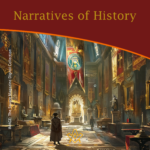 Narratives of History |
 A Very Royal Sesquicentenary |
 Unveiling the Enigma: Discover the Royal Society's Legacy and its Impact on Science. Delve into the fascinating history of the Royal Society, the prestigious UK academy shaping scientific progress since 1660. Explore its pivotal role in advancing knowledge, fostering collaboration, and unlocking the secrets of the universe. Prepare to be amazed! |
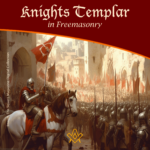 Knights Templar in Freemasonry Uncover the Mysteries of the Knights Templar in Freemasonry! Delve into the intriguing world where chivalry and symbolism intertwine. Discover the captivating rituals and ancient secrets behind the Knights Templar Masonic Orders. Explore the historical connection and delve into the enigmatic narratives that continue to fascinate enthusiasts today. Unveil the hidden truths now! |
 The Royal Arch stands as the rainbow of promise in the Ritual; it stands as the promise of the resurrection; of that which was lost and that it shall be recovered. The question arises as to whether the Master's Word was originally communicated in the Third Degree? On this point there is some diversity of opinion. Originally published in 1915, this insight into the Fourth Degree – the Holy Royal Arch – is as relevant today as it was over 100 years ago. |
 Unveiling the Mysteries of Druidism: Discover the Intriguing Connection with Freemasonry. Explore the ancient spiritual practice of Druidism and its fascinating ties to the enigmatic world of Freemasonry. Delve into the shared symbolism and rituals that have captivated minds for centuries. Unlock the secrets of these intertwined traditions today! |
 Uncover the legacy of freestone masons and their pivotal role in crafting medieval cathedrals. Discover the artistry behind their techniques, the hierarchy within their craft, and the enduring impact of their intricate carvings. A deep dive into the world of these master craftsmen awaits you! |
 Unearth the intriguing journey from Vincha Culture to Freemasonry. Discover how ancient building methods intertwine with modern Masonic philosophies. This exploration will shed light on the fascinating link between the Serbian term "shestarenye" and the symbolic significance of the compass in Freemasonry. |
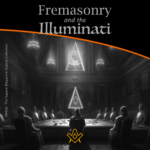 Freemasonry and the Illuminati Unravel the enigmatic world of Freemasonry and the Illuminati in our latest exposé. Dive into centuries-old mysteries, debunk conspiracy theories, and discover the truth behind these elusive societies. Are they puppet masters or mere myths? Join us as we dissect history and fact from fiction. |
 The Île des Templiers, or “Island of the Templars” lies within a leafy park in Paris. The execution site of Jacques du Molay, the last Grand Master of the Knights’ Templar bears a plaque with the epitaph ‘A cet endroit / Jacques de Molay / Dernier grand maître / de l'ordre du temple / a été brûlé le 18 Mars 1314’ (‘In this location / Jacques de Molay / Last grand master / of the order of the temple / was burned on 18 March 1314’) |
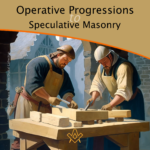 Operative Progressions to Speculative Masonry Both Operative and Speculative Masonry are an important part of the modern fraternity of Freemasonry, which combines elements of both traditions. Today, Freemasonry is a fraternity that is open to men of good character, who are interested in personal development and in making a positive contribution to their communities. |
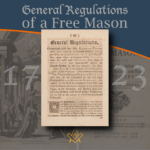 General Regulations of a Free Mason, 1723 General Regulations of a Free Mason as contained in Anderson's Constitutions of the Freemasons, published 1723. the Regulations are of great historical interest. Compiled by George Payne, the second Grand Master of the Premier Grand Lodge of England, they were printed in 1722/3, thus published just over five years after the formation of the Grand Lodge 1717. |
 The Genesis of the 1723 Book of Constitutions 2023, marks the three hundredth anniversary of the publication of the first printed Book of Constitutions of the Grand Lodge formally established in London two years previously. This is an anniversary whose significance extends beyond freemasonry. A paper by Andrew Prescott |
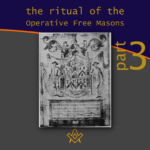 The Ritual of the Operative Free Masons - P3 Existing Operative Free Masons. The ritual I am about to refer, is that of "The Worshipful Society of Free Masons, Rough Masons, Wallers, Slaters, Paviors, Plaisterers, and Bricklayers." By Thomas Carr, M.D., P. M. Honorary Member of the Guild of Operative Free Masons |
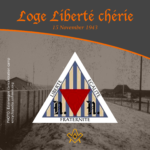 Liberté chérie was a Masonic Lodge founded in 1943 by Belgian Resistance fighters and other political prisoners at Esterwegen concentration camp. It was one of the few lodges of Freemasons founded within a Nazi concentration camp during the Second World War. |
 The Ritual of the Operative Free Masons - P2 If anyone doubts the fact that the formation of Speculative Free Masonry was due to and based upon Operative Free Masonry, it is quite easy to convince him of his error if he will only study the first Book of Constitutions. By Thomas Carr, M.D., P. M. Honorary Member of the Guild of Operative Free Masons |
 In 1881, Freemasonry rose from the ashes of a fire in the mining town of Kokomo, Summit County, Colorado. Corinthian Lodge No. 42, along with Kokomo, no longer exists but it holds the record of having been – at an elevation of 10,618 feet – the highest Masonic Lodge in the USA. |
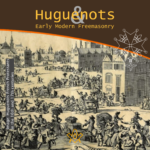 The Huguenots and Early Modern Freemasonry The Huguenots influence in the development of early modern Freemasonry at the time of the formation of the Grand Lodge in London around 1717 / 1723. |
 November is a month of reflection – perhaps due to the fact that we are getting close to the years' end – but also because Remembrance / Armistice Day (11 November) is a significant date in most countries' diaries. |
 Speculative Freemasonry, as practise by Grand Lodge of England, was officially born just over three hundred years ago, is today an international organisation, counting over six million members. It has been subjected to persecution, suppression, and abolition throughout its history. In its infancy, only a couple of decades after its official birth, it had already become a target. |
 The Ritual of the Operative Free Masons - P1 The original paper was written, first, to prove that Speculative Free Masonry was derived from Operative Free Masonry; second, to give some account of the Operative Free Masons, of their Ritual, and of their customs. By Thomas Carr, M.D., P. M. Honorary Member of the Guild of Operative Free Masons |
 American Fraternalism in the 19th and Early 20th Centuries The late 19th and early 20th centuries in the United States has been called the "Golden Age of Fraternalism." How did this come about and why was the idea of joining a fraternal organization so popular? We will explore this question and examine the regalia used by many fraternal organizations in this period. |
 Societas Draconistarum, meaning "Society of the Dragonists"– was a chivalric Order for selected nobility, founded in 1408 by Sigismund von Luxembourg, who through marriage became the King of Hungary (1387–1437) and later Holy Roman Emperor. The Order was fashioned after the military orders of the Crusades, requiring its initiates to defend the cross and fight the enemies of Christianity, in particular the Ottoman Empire. |
 The Perjured Free Mason Detected Was Samuel Prichard a perjured individual, or simply a misguided Freemason? Prichard's book "Free Masonry Dissected" published in 1730, is now used by many Masonic historians as a source of reference with regards to the introduction of the third degree into the Craft. But at the time it was published in 1730, it was not so well received by members of the Grand Lodge of England. |
 17th century and the Holy Royal Arch This article focuses on a period of transition between a point in time when we can safely and historically identify the first formation of what could be called as the ‘Royal Arch’ and the historical events that have preceded it. |
 Most Freemasons have heard the terms 'Operative' and 'Speculative' Masons, and this article helps to understand the difference: |
 Roberts' Constitutions of Freemasonry 1722 Published a year before Anderson's Constitutions, The Old Constitutions Belonging to the Ancient and Honourable SOCIETY OF Free and Accepted MASONS. Originally printed in London England; Sold by J. Roberts, in Warwick-Lane, MDCCXXII.(1722) |
 From 'Songs of religion and life', 1876 by John Stuart Blackie (1809-1895) |
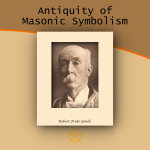 On the Antiquity of Masonic Symbolism Is the Symbolism of Masonry an inheritance derived from the old Masons who flourished before the era of the Grand Lodges (1717); or has it been borrowed from the Rosicrucians or others, after 1717? |
 Mason's Marks – from Egypt to Europe? Mason's marks have been a source of intrigue, not only to Freemasons but to historians and archaeologists. The use of simple pictograms have been employed for millennia by artisans to identify their work. But where did they originate and why? |
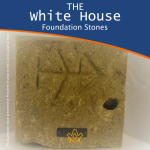 The White House Foundation Stones Further to the articles in our series on the history of the stone masons, we have a rather intriguing addition. During the 1950's renovation of the White House, President Truman retrieved more than 100 stone blocks with stonemasons marks. |
 What the Goose and Gridiron Tavern is in the ancient annals of London Freemasonry, The Green Dragon Tavern is to the memories of the Free-mason, of Boston and New England. |
 Auschwitz concentration camp: video photo article taken in 2013 |
 There are two things of importance happening this day - 27 January |
 Two approaches regarding the understanding of Freemasonry |
 Masonic Research in England c1930 An article which appeared in an American Masonic magazine, c1930 and which was reproduced in England, provoking a little controversy. |
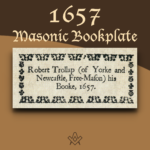 Masonic bookplates the ‘Brethren’s spiritual coats of arms and marks’ |
 The Unlawful Societies Act of 1799 Rebellious Freemasons and the 21st century |
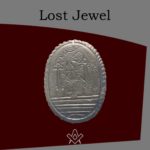 In 1912, Sarah Dowd of Dromore, Ireland, found a Masonic jewel dated 1517 - a date two hundred years before the establishment of Grand Lodge... |
 Freemasonry and Fascist Regime Interesting speech by the famous historian Prof. Aldo A. Mola, who links the fascist regime with the Masonic Associations. |
 Was famous Russian poet Alexander Pushkin a Freemason? And if so, was he a member of the lodge ‘for which all the lodges in Russia were destroyed’? |
 The Importance of Masonic Research Why is accurate - or authentic - Masonic research so important? The importance of making a daily advancement in Masonic knowledge is something that The Square is passionate about promoting. |
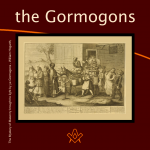 The Antient Noble Order of the Gormogons had a brief existence in the eighteenth century; they left few records or accomplishments, |
masonic knowledge
to be a better citizen of the world
share the square with two brothers

click image to open email app on mobile device









